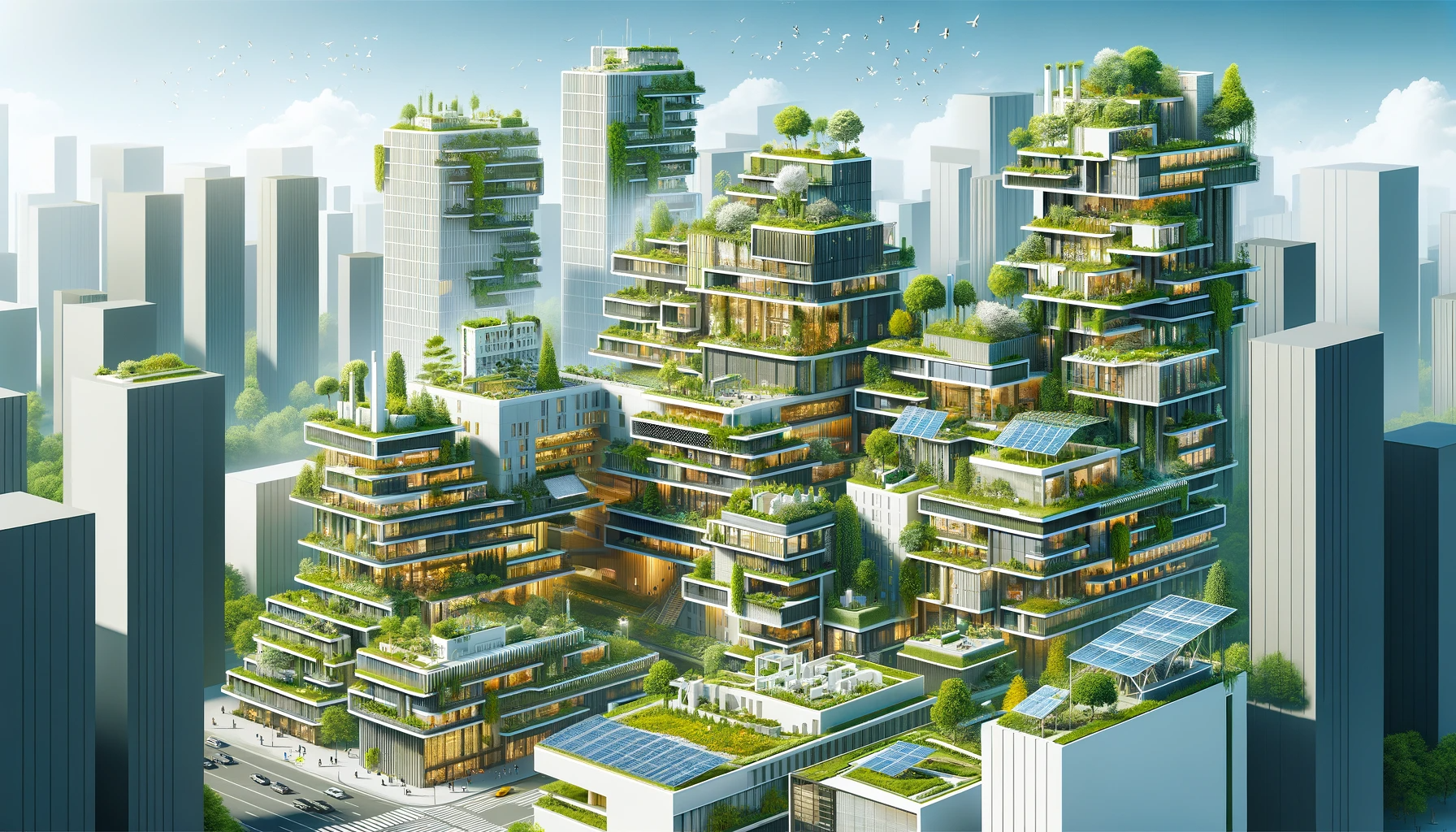The construction sector, historically a major contributor to environmental degradation, is witnessing a transformative shift. The Green Building Movement, emphasizing sustainable practices in construction and design, promises buildings that coexist harmoniously with nature. This article delves into this innovative architectural trend and its planetary benefits.
1. Defining Green Buildings Green buildings focus on energy efficiency, sustainable materials, and a holistic approach to design that minimizes environmental impact while enhancing occupant health and comfort1.
2. Key Principles
- Energy Efficiency: Green buildings optimize energy usage, often harnessing renewable sources like solar and wind, and utilize state-of-the-art insulation and HVAC systems2.
- Water Conservation: They adopt water-efficient fixtures, rainwater harvesting, and greywater recycling to reduce freshwater consumption3.
- Sustainable Materials: Prioritizing recycled, reclaimed, and rapidly renewable materials reduces resource depletion and waste4.
3. The Role of Certifications Organizations like the U.S. Green Building Council (USGBC) offer LEED certification, setting standards that buildings must meet or exceed to be recognized as ‘green’5.
4. Health and Well-being Green buildings promote a healthier indoor environment by using non-toxic materials and improving air quality, which can enhance occupants’ well-being and productivity6.
5. Economic Benefits While green buildings might have higher upfront costs, long-term savings from reduced energy and water bills, coupled with increased property values, make them economically appealing7.
6. Urban Integration Green buildings can be seamlessly integrated into urban environments, aiding in reducing urban heat islands and promoting biodiversity with green roofs and walls8.
7. Challenges and the Road Ahead Adoption barriers include higher initial costs, lack of awareness, and fragmented industry standards. However, with increasing global focus on sustainability, the movement is gaining momentum9.
Conclusion The Green Building Movement is not just an architectural trend; it’s a commitment to a sustainable future. By reimagining how buildings are designed, constructed, and maintained, we pave the way for a harmonious coexistence with our planet.
References:
- Kibert, C.J. (2016). Sustainable construction: Green building design and delivery. John Wiley & Sons.
- Perez-Lombard, L., Ortiz, J., & Pout, C. (2008). A review on buildings energy consumption information. Energy and buildings, 40(3), 394-398.
- Gleick, P.H. (2003). Water use. Annual Review of Environment and Resources, 28(1), 275-314.
- Bowyer, J., Bratkovich, S., Frank, M., & Fernholz, K. (2010). Green building: A review of the energy, environmental, and cost impacts. Dovetail Partners, Inc.
- U.S. Green Building Council. (2019). LEED v4 for Building Design and Construction.
- Wargocki, P., & Wyon, D.P. (2007). The effects of moderately raised classroom temperatures and classroom ventilation rate on the performance of schoolwork by children. HVAC&R Research, 13(2), 193-220.
- Eichholtz, P., Kok, N., & Quigley, J.M. (2010). Doing well by doing good? Green office buildings. American Economic Review, 100(5), 2494-2511.
- Santamouris, M. (2014). Cooling the cities – A review of reflective and green roof mitigation technologies to fight heat island and improve comfort in urban environments. Solar Energy, 103, 682-703.
- Say, C., & Wood, A. (2008). The green building challenge in developing countries. Procedia Engineering, 21, 143-156.


